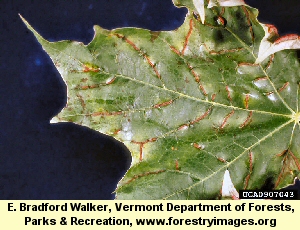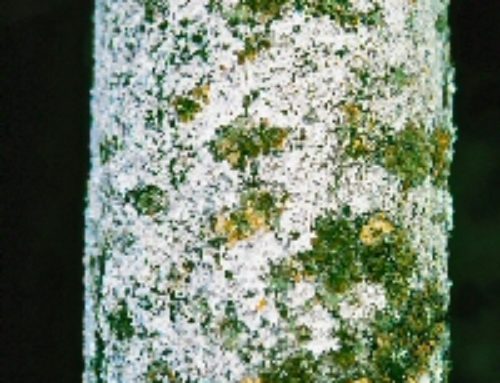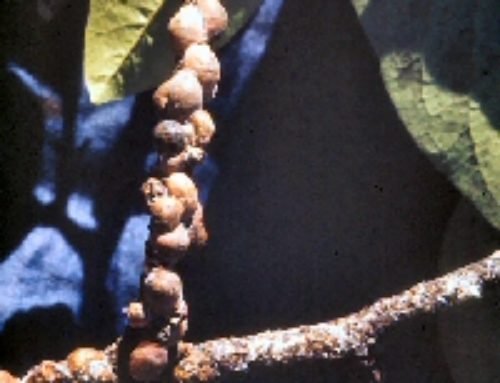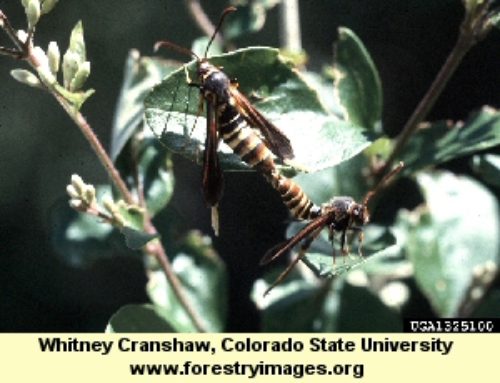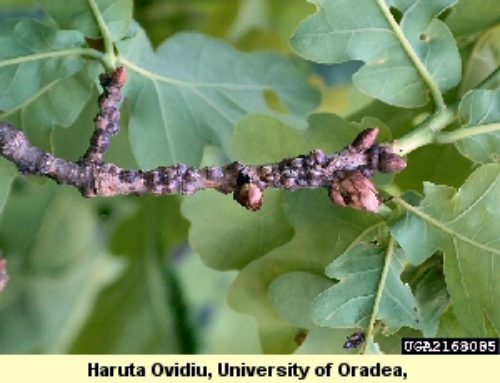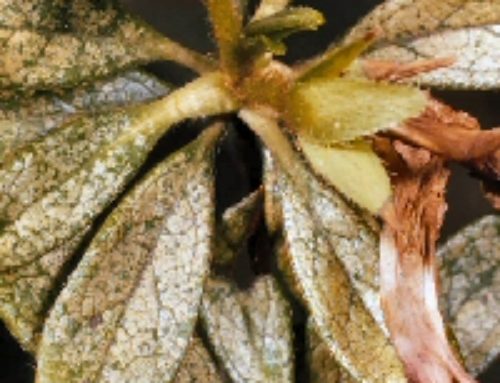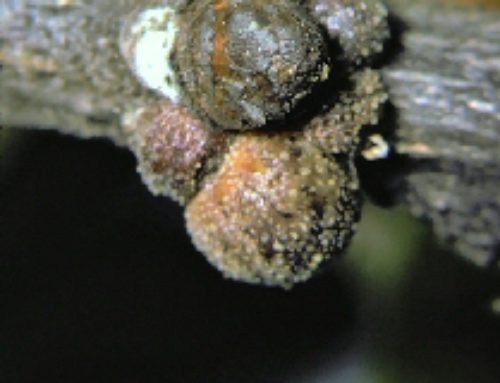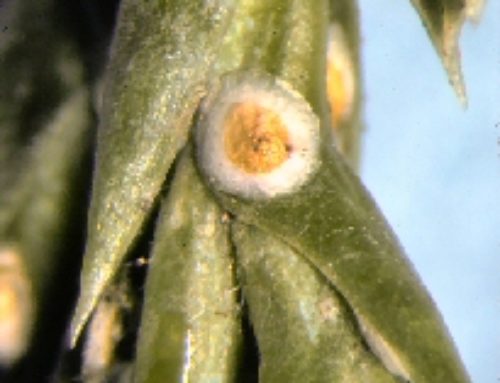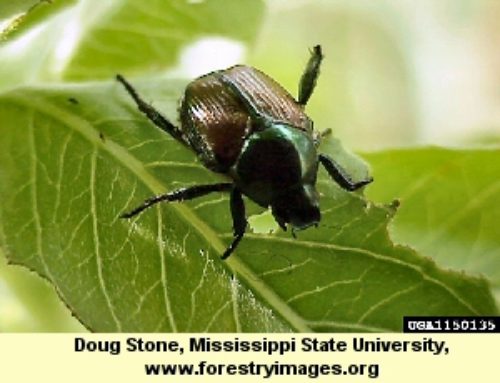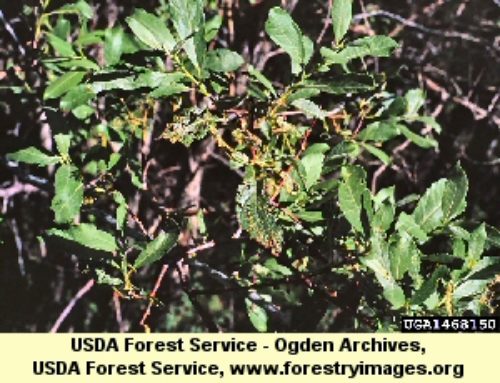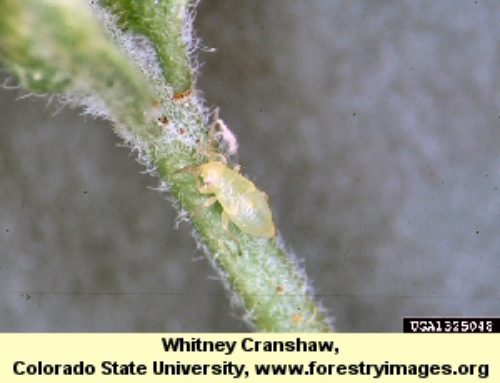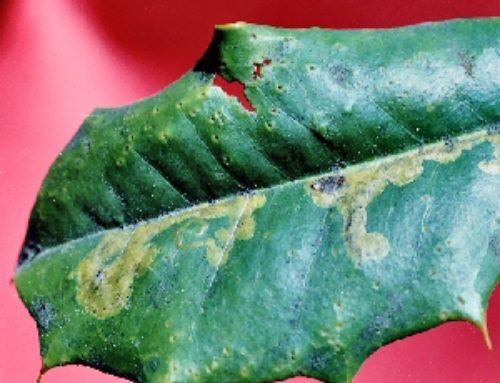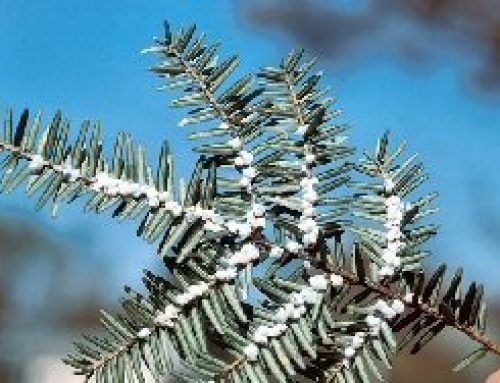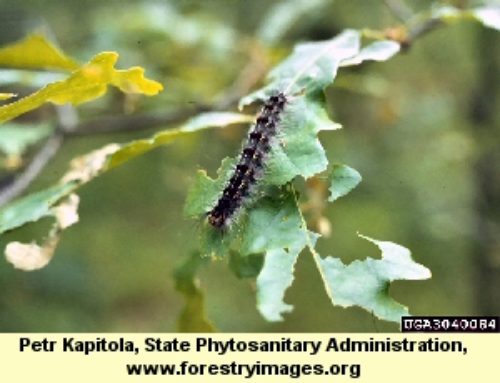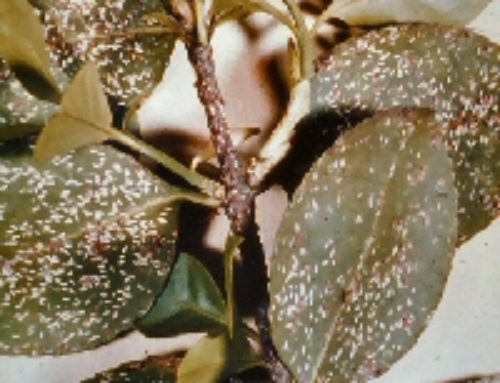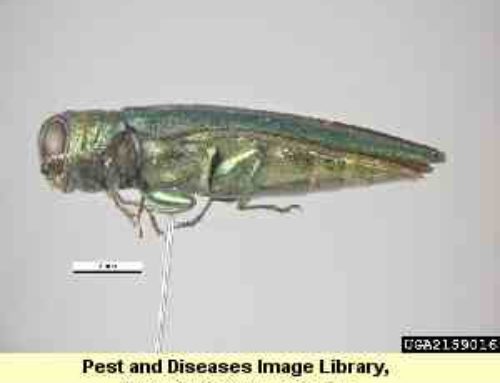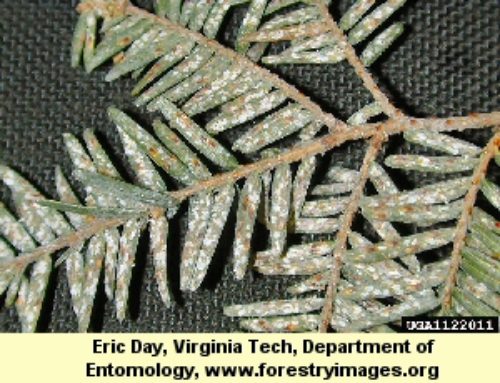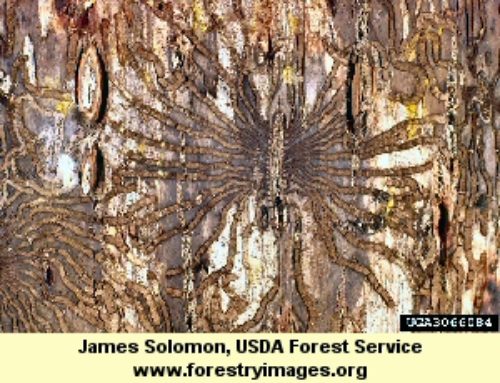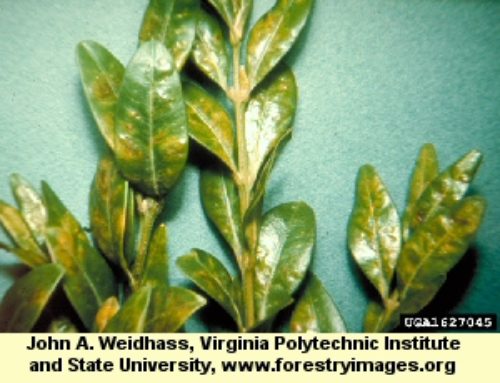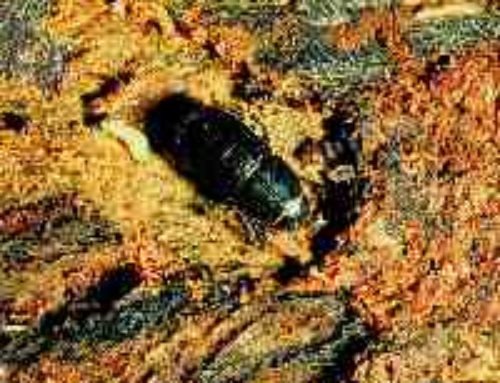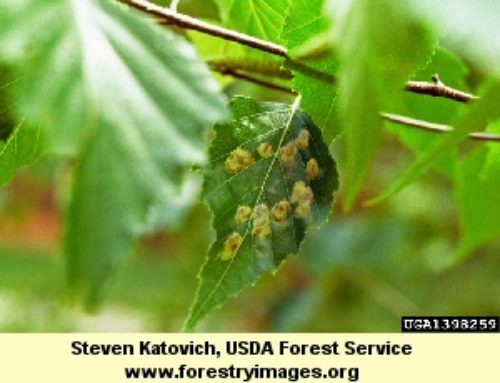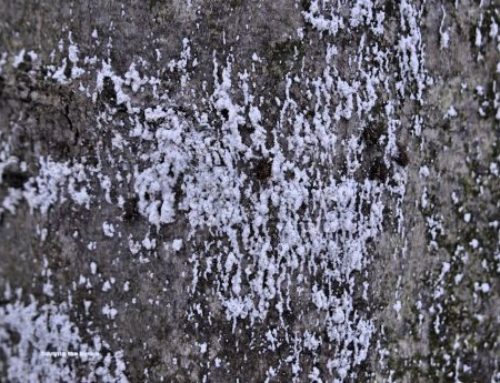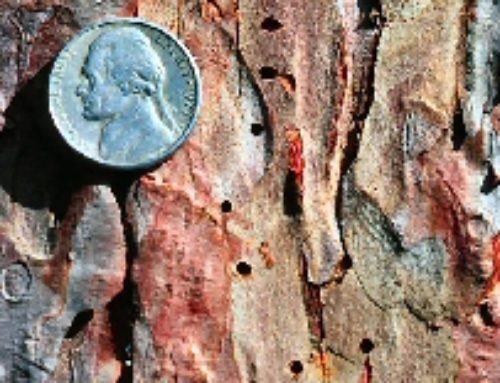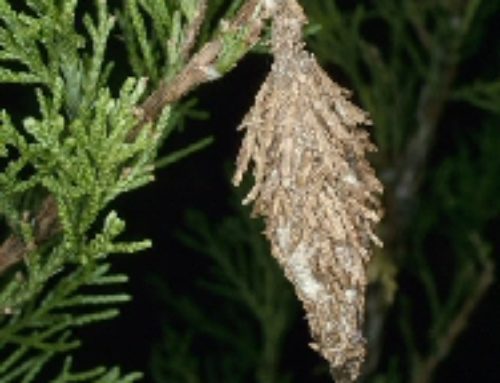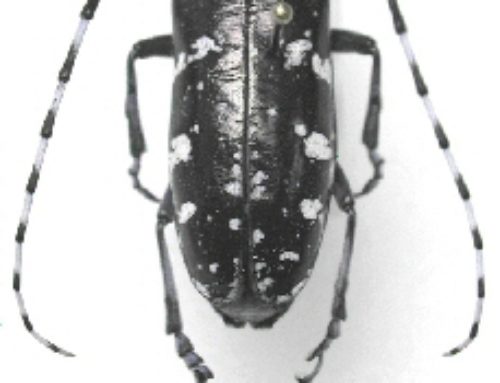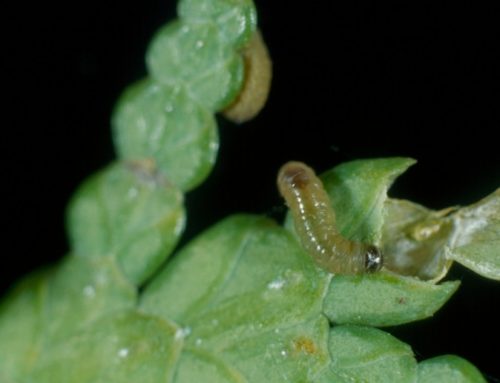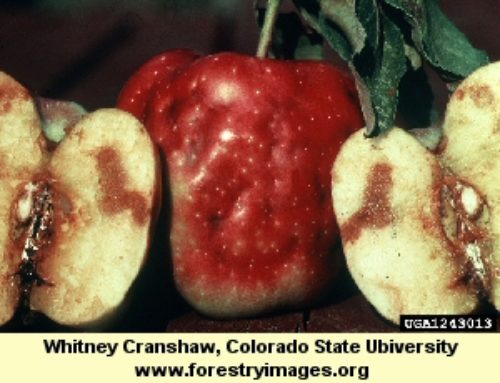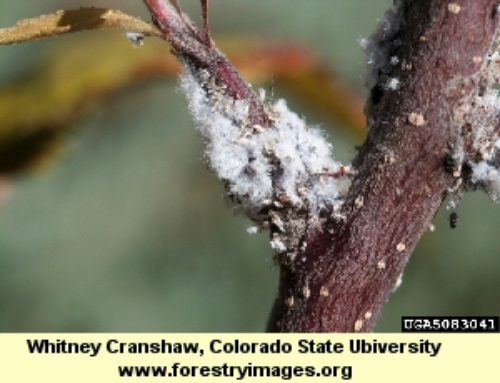The upper surface of silver and red maple leaves often become covered with small, red, round wart-like structures caused by a small mite, Vasates quadripedes. The structures are generally noticed first in May, about the time the leaves have become fully expanded. At first the galls are green but they quickly turn pink to red and eventually black. Leaves frequently become so covered with the galls that they completely twist out of shape and may even drop early. On sugar maple, another leaf gall is commonly found, the maple spindle gall caused by a mite, Vasates aceriscrumena. The gall appears as thin, elongate bladders arising from the leaf upper surface. These galls rarely distort the leaf but considerable numbers of galls can make the leaves unsightly. The maple gouty vein gall midge Dasyneura communis only attacks sugar maple and causes thickened pouches along the major veins. These galls can completely crumple the early leaves of maples, often making them look like herbicide damage. Homeowners often become quite alarmed when they discover that their maple tree leaves are infested with leaf bladder, spindle or gouty vein galls. They fear that the tree is going to die unless something is done quickly. This is not the case. Maple leaf galls seldom, if ever, cause permanent injury to a tree, but they do detract from the beauty of the leaves.
Fox Tree Service is proud to be a division of Bartlett Tree Experts, and our staff now has the backing of an international tree-care company and tree research laboratory to help continue providing excellent tree service throughout the Farmingdale and Southampton areas. View a complete list of professional tree services offered by Bartlett.

